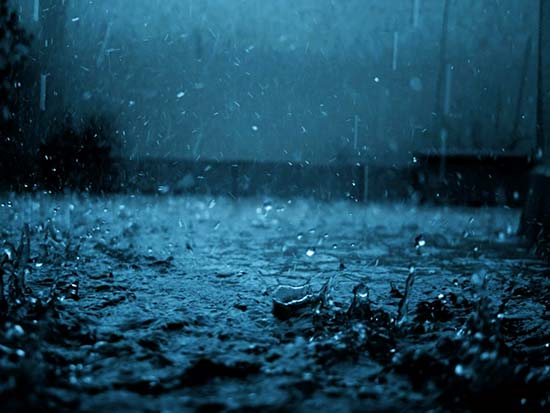Storm to bring ice, heavy rain and flood risk as drastic temperature swings occur in northeastern US

While Arctic air will leave quickly enough to allow a dramatic rise in temperature later this week, a storm will bring locally heavy rain with ice at the onset in some locations and a change back to snow for other areas of the northeastern United States spanning Wednesday to Thursday.
Actual temperatures are forecast to surge 30 to 50 degrees Fahrenheit from their lowest point this past Monday morning to the peak of the warmth on Thursday. When factoring in AccuWeather RealFeel® Temperatures from the start of the week to Thursday, it may feel 60 to 80 degrees warmer for a time, despite the rain.
For example, at Albany, New York, during Monday morning, the actual temperature was minus 7 F and the RealFeel Temperature was minus 37. During Thursday, the actual temperature is forecast to reach the middle 40s with a RealFeel Temperature near 40.
Warm air will win the battle for a brief time, but the ground will remain cold for several hours after the rain begins.

Because of this, a thin glaze of ice (black ice) may form on roads, sidewalks and parking lots. Motorists and pedestrians should use caution when traveling during the first several hours of the rainstorm. Even though surfaces may be wet at one location, they may be icy at another.
Ice is most likely but not limited to areas from the Carolina Piedmont, northward to northern New England.
There is a remote chance that ice manages to freeze on some surfaces, even as far east as some of the suburbs of the major cities along the Interstate 95 corridor of the upper mid-Atlantic and New England at the onset of the rain.
Enough rain is forecast to fall during the height of the storm to cause water to collect on the highways. City street and other poor drainage-area flooding can occur. The flooding may not be limited to areas with snow on the ground or where snow is piled in front of storm drains.

Urban flooding can occur in the major I-95 cities from Washington, D.C., to Philadelphia, New York City and Boston.
It is possible this quick thaw, which will be accompanied by drenching rain, may be enough to trigger minor ice jam flooding on some of the rivers. People living along unprotected low-lying areas of streams and rivers where ice has formed should remain vigilant as conditions can change by the hour.
"A repeat of the widespread rapid meltdown and flash flooding like that of January 1996 is not anticipated at this time, since less rain is likely to fall and there is generally much less snow over a less widespread area this time,"according to AccuWeather Chief Meteorologist Elliot Abrams.

A general 1 to 1.50 inches of rain is forecast with local amounts between 2 and 3 inches possible. These estimates are higher than originally predicted on Monday.
In addition to the risk of urban flooding and areas of ice, locally dense fog may be accompany the rain for a time. The fog is most likely in areas where snow remains on the ground a short time after the rain has begun and may continue until the conclusion of the storm or the snow has completely melted.
Rain, fog and locally gusty winds may be a problem for motorists and flights. Expect travel delays as the storm gets underway.
Meanwhile, colder air will sweep in behind the storm.
Even though this air is initially not nearly as cold as the air that blasted in during Sunday and Monday, it will be cold enough to allow a change to snow in some areas.

This is most likely from eastern Tennessee to the Virginia Panhandle, West Virginia, western and central Pennsylvania, western, central and northern New York state and northwestern New England on Thursday.
There is a chance the rain ends as snow east of the Appalachians from the upper mid-Atlantic to New England. However, the rain is much more likely to simply end. It may still get cold enough, fast enough to cause untreated wet areas and puddles to freeze later Thursday night to Friday morning.
People should take advantage of the upcoming thaw to relocate piles of snow and ice ruts from their property.
Another blast of Arctic air is forecast to close out the week.

Winds may be less fierce with the new shot of cold air, and temperatures are not likely to remain at low levels for as long as they were during the previous cold blast.
"With the sudden and large temperature fluctuations, there will be an increased risk of water main breaks and potholes,"Abrams said.

